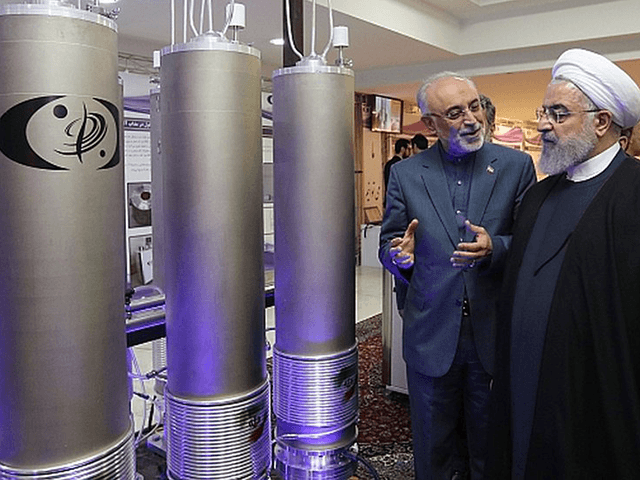Iran has stockpiled an amount of low-enriched uranium twelve times greater than the legal limit allowed under the 2015 nuclear deal, the International Atomic Energy Agency (IAEA) said on Wednesday.
The United Nations (U.N.) nuclear watchdog presented its findings in a confidential document distributed to member states and seen by news agencies.
“As of November 2, the nuclear watchdog said that Iran had a stockpile of 2,442.9kg (5,385.7 pounds) of low-enriched uranium, up from 2,105.4kg (4,641.6 pounds) reported on August 25. The nuclear deal Iran signed in 2015 with world powers allowed it only to keep a stockpile of 202.8kg (447 pounds),” Al Jazeera reported.
Iran has continued to enrich uranium to a purity of up to 4.5 percent according to the IAEA report. This violates the 3.67 percent threshold allowed under the Joint Comprehensive Plan of Action (JCPOA), or Iran nuclear deal, brokered by President Barack Obama.
The IAEA also stated in its report that Tehran’s explanations for the presence of nuclear material detected at an undeclared site in Iran were “not credible.” Although Iranian authorities provided the IAEA with some information about the undeclared nuclear site, “the agency informed Iran that it continues to consider Iran’s response to be not technically credible,” the report said.
“A full and prompt explanation from Iran regarding the presence of uranium particles of anthropogenic origin … at a location in Iran not declared to the Agency, is needed,” the nuclear watchdog added.
Iran in 2015 signed the JCPOA, a nuclear agreement with world powers that offered Tehran billions in sanctions relief if it agreed to curb its nuclear activities. The Islamic Republic has repeatedly reneged on commitments made under the JCPOA since its signing. Following years of violations by Iran, U.S. President Donald Trump’s administration exited the nuclear accord in 2018 and reimposed economic sanctions on Iran meant to deter its nuclear proliferation.
The IAEA “is still analyzing samples taken in September from two suspected former nuclear sites [in Iran], which were opened up to inspectors this year,” the BBC reported on Thursday.
Satellite images released late last month appeared to show that Iran had recently started work on a construction project at its Natanz nuclear site. The Associated Press reported on October 28 that Tehran had begun building “a new or regraded road to the south of Natanz towards what analysts believe is a former firing range for security forces at the enrichment facility.” The news agency cited images from the San Francisco-based Planet Labs.
News of the construction project followed shortly after the head of the Atomic Energy Organization of Iran (AEOI), Ali Akbar Salehi, told Iranian state media on September 8 that authorities were replacing Natanz’s above-ground nuclear production hall — destroyed in a July 2 explosion — with an underground advanced centrifuge assembly plant “in the heart of the mountains around Natanz.”

COMMENTS
Please let us know if you're having issues with commenting.